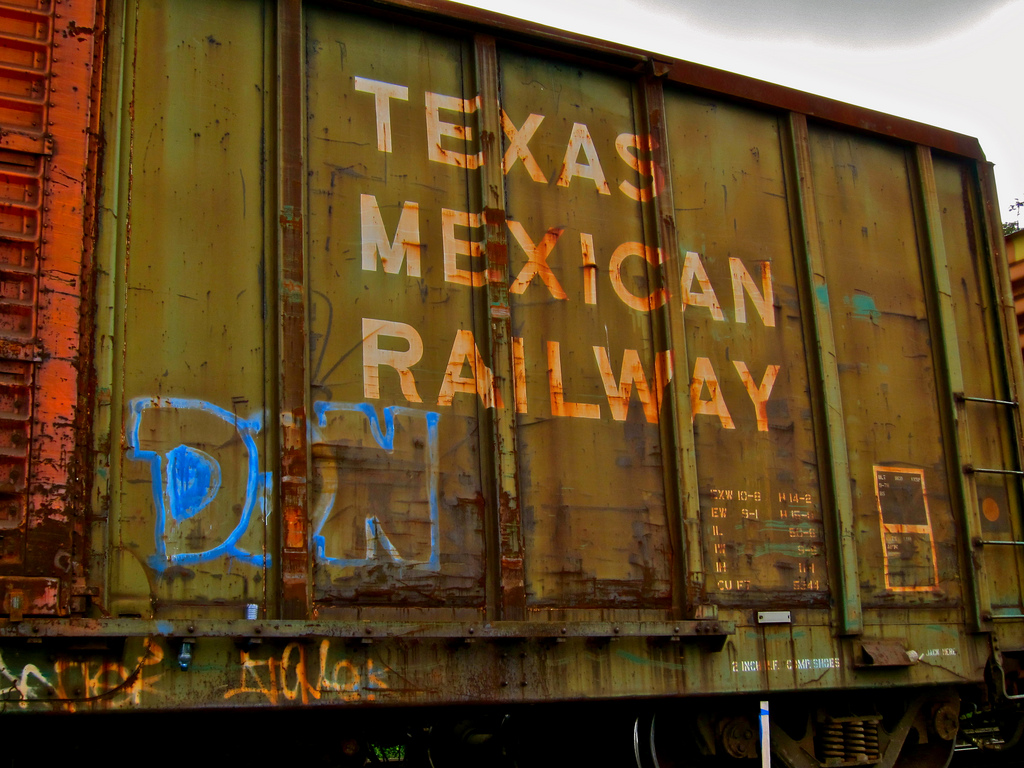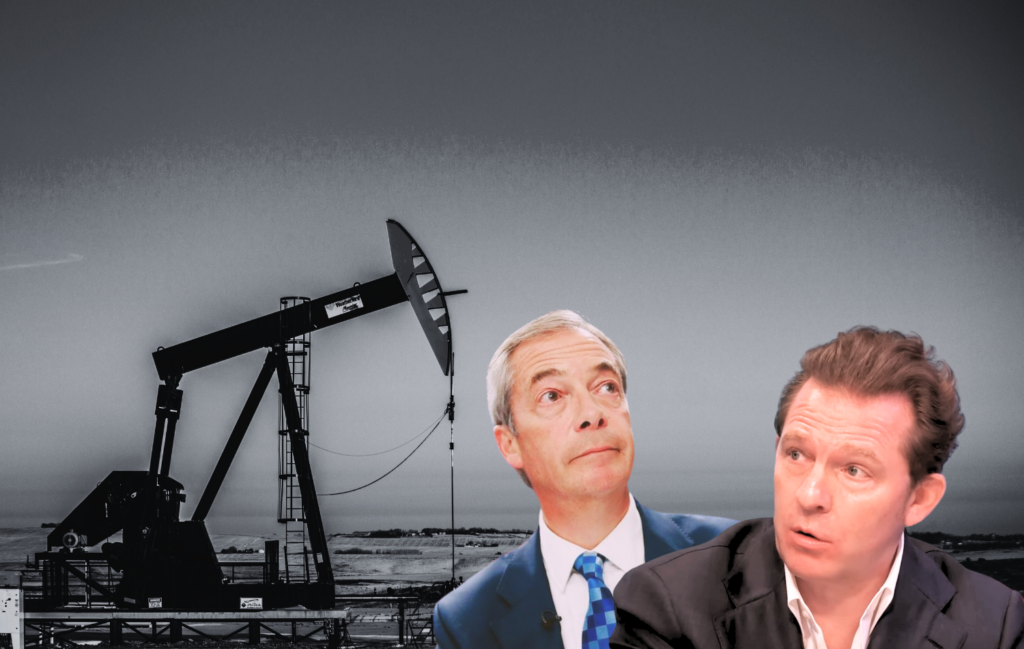The oil industry learned an important lesson from its rush to move by train the highly flammable oil drilled in North Dakota’s Bakken Shale. The lesson wasn’t that those oil trains were unsafe and even dubbed “bomb trains” by rail workers (although they were). The lesson wasn’t that their derailments caused several major oil spills in North America as well as the tragic accident in Lac-Mégantic, Canada, which killed 47 people and leveled the downtown area (although they did).
No, what the oil industry learned from this experience was that when it doesn’t have adequate pipeline capacity, its companies can still make money moving flammable petroleum products by rail, despite the well-documented risks outlined above. And the industry is now taking the same steps to move refined petroleum products — including gasoline — to Mexico by rail.
“There is a tremendous opportunity to move product into Mexico effectively by rail,” Daniel Gordon, executive vice president of business development and strategy at refining company Delek U.S. Holdings Inc., explained to Reuters in January.
Kansas City Southern is one of the larger rail companies ideally positioned to profit from this opportunity, its CEO Patrick Ottensmeyer told Reuters.
“The railroad is already built. Building terminals, buying equipment, all of that is easy compared to building a 1,000-to-1,500-mile pipeline. We have at least a three-to five-year head start on pipelines,” he said.
Kansas City Southern increased its fuel shipments to Mexico by over 200 percent in 2017.
Ottensmeyer echoes the bullish sentiment of the oil and rail companies in North Dakota as the Bakken oil industry escalated years ahead of the pipelines it needed to transport its products.
Rail company Union Pacific’s (UP) business manager Trevor Hogg explained to Progressive Railroading in May 2011 the same advantages of rail vs. pipelines: “Although it can take one to five years to obtain permits, clear regulatory hurdles, and establish infrastructure for a pipeline, UP can start up a crude move ‘in a couple of months’.”
And so American companies will be loading long unit trains full of gasoline, diesel, and jet fuel at U.S. refineries and then shipping those trains to Mexico. This opportunity is even part of the business plan for a new $450 million Texas refinery that broke ground in late 2017 and plans to use rail to ship its finished products to Mexico.
Exxon Claims Gas-by-Rail Effective But ‘Safe’
So, is it safe to be moving refined petroleum products like gasoline by rail? According to ExxonMobil, the practice is both safe and effective.
Martin Proske, Mexico fuels director for ExxonMobil, explained to Reuters the company position on shipping refined petroleum products by rail: “It is an efficient way, a safe way.”
While it is fair to say that moving flammable products by rail is efficient, what is dubious is the safety. Was it safe to move Bakken oil by rail, considering its high volatility and massive explosions during derailments? No.
Interestingly enough, as the investigations into the Lac-Mégantic disaster unfolded, Don Ross, the lead investigator for Canada’s Transportation Safety Board, explained just how flammable the Bakken oil that caused the deadly explosion actually was:
“When we analyzed the product samples from the nine intact tank cars from the Lac-Mégantic accident, we identified the product as having the characteristics of a packing group 2 flammable liquid. Packing group 2 is the packing group that gasoline is in.”
Even though gasoline was used as an example of just how dangerous the oil in the Lac-Mégantic accident was (i.e., as flammable as gasoline), now American oil and rail companies are ramping up a whole new gasoline-by-rail industry. And they very likely will be doing it using the riskiest of rail tank cars, DOT-111 cars, which were not designed to move flammable products and which the U.S. is slowly phasing out. But these tank cars are cheap and readily available, making them enticing to the oil and rail industries in markets outside the U.S.
Reuters reported that “the Mexican market has also become a boon for tank car leasing companies.” In its coverage, it notes that according to rail consultant Tom Williamson of Transportation Consultants, “Lease rates for older tank cars being phased out in the United States that can still be used in Mexico have jumped to roughly $500 a month, up from $200 six months ago.”
When DeSmog asked Williamson about the types of rail cars he was discussing with Reuters, he replied, “We are not involved in the moves to Mexico for petroleum or petroleum products.” An odd response given that he spoke with authority to Reuters about the subject. Why would those in the rail industry not want to explain which tank cars were being used to move gasoline by rail?
The clue is that the lease rates Williamson cited were for “older tank cars being phased out in the United States that can still be used in Mexico.” That almost certainly refers to the DOT-111 tank cars that are being phased out of use for moving oil by rail in Canada and the U.S. They are being phased out because these thin-shelled rail cars pose huge risks when used to move flammable liquids. Fred Millar, a consultant who focuses on rail safety, refers to the DOT-111 tank cars as “Pepsi cans on wheels.”
The U.S. Pipeline and Hazardous Materials Safety Administration (PHMSA) is the division of the Federal Railroad Administration responsible for regulating the movement of flammable materials by rail. PHMSA responded to an inquiry about regulations for moving gasoline by rail by simply stating: “Gas-by-rail is subject to the regulations as crude-by-rail and HHFT [high-
Which is true. However, as we’ve detailed on DeSmog, the current regulations for moving flammable materials by train are woefully inadequate and fail to address many known safety risks. As a result, it shouldn’t be surprising that a “business as usual” approach is being applied to the new business of exporting gasoline by rail to Mexico. Unless something goes terribly wrong, the practice likely will undergo no new scrutiny. As they say in the rail industry: “Railroad rules have been written in blood.” Don’t expect any new regulations until someone dies as a result of shipping gas-by-rail.
Exxon did not respond to a request for comment on the types of rail cars the company was using to ensure the movement of gas by rail is “safe.” Representatives of rail company Kansas City Southern in both the U.S. and Mexican offices failed to respond to questions on the types of rail cars being used to move gas by rail. From regulators and industry consultants to rail and oil companies, no one seems to want to share any details about this new “safe” and “efficient” gas-by-rail business.
Gas by Rail: Bomb Trains, Part 2?
In 2014, Deborah Hersman, who at the time was the head of the National Transportation Safety Board (NTSB), posed the following question to a large group gathered in Washington, D.C., to discuss how to deal with exploding Bakken oil trains.
“How did it [risk of Bakken oil trains] get missed for the last 10 years?”
As we’ve detailed on DeSmog, it is highly unlikely the risk of putting volatile Bakken oil in DOT-111 tank cars was missed — what is more likely is that it was ignored. The DOT-111s were cheap and available. The oil was clearly volatile — some shale oil is capable of essentially boiling at room temperature — but, as the industry has admitted readily, that volatility made the oil more valuable because of the natural gas liquids like propane and butane.
As a result, oil companies have chosen to place dangerously volatile oil in unsafe rail cars because it was the best option at the time, for the oil producers at least. Safety was clearly not the top priority. And regulators did nothing to address the risks of this new oil-by-rail industry. Even when the head of the Federal Railroad Adminstration proposed addressing the volatility of oil with new regulations that took effect in 2015, he was overruled by Obama’s White House.
All indications point to American companies knowingly filling long unit trains of unsafe DOT-111 tank cars with gasoline, which are then shipped by rail to Mexico. As PHMSA has noted, this does not violate existing regulations.
However, it clearly puts at risk any communities living along the tracks that these trains travel. DeSmog contacted the NTSB to request a comment on the safety of moving gasoline by rail. The NTSB has a policy of only commenting on investigations and not on policy. It should be noted that while the NTSB often issues safety warnings, the agency has no enforcement authority, which means its warnings often are ignored for — decades.
In a 1991 letter warning about the risks of moving flammable liquids in DOT-111 tank cars, the NTSB wrote: “The inadequacy of the protection provided by DOT-111A tank cars for certain dangerous products has been evident for many years.” That was nearly three decades ago.
In March of this year, NTSB board member Robert Sumwalt told Railway Track & Structures magazine, “We urge stakeholders to move to using the DOT-117 standard when carrying ethanol as soon as possible, ahead of the mandated deadlines.” The DOT-117 tank cars are more robust tank cars and required by the latest federal rules. As noted on DeSmog, the industry has been very slow in upgrading to the DOT-117 standard among the fleet of tank cars used to move crude oil. And the ethanol industry still mostly uses the DOT-111 tank cars.
While the NTSB would not comment on the safety of moving gasoline by rail in DOT-111 tank cars, the board has warned about moving ethanol in anything but the safest DOT-117 tank cars. Ethanol and gasoline have the same classification for flammable liquids.
It is highly unlikely that the risks of Bakken oil were missed by the industry during the Bakken oil-by-rail boom. And while regulatory agencies like PHMSA might be able to claim ignorance, even when the risks are known, PHMSA‘s record isn’t particularly encouraging. Its actions (or inactions) have earned it the nickname “fluffy industry pet” from critics such as Rep. Jackie Speiers (D-CA).
The risks of moving flammable liquids like Bakken crude, ethanol, and gasoline by rail are evident. For a preview of what’s to come by exporting gasoline on trains to Mexico, just look to the past.
Main image: Texas Mexican Railway car. Credit: Curtis Cronn, CC BY–NC–ND 2.0
Subscribe to our newsletter
Stay up to date with DeSmog news and alerts







